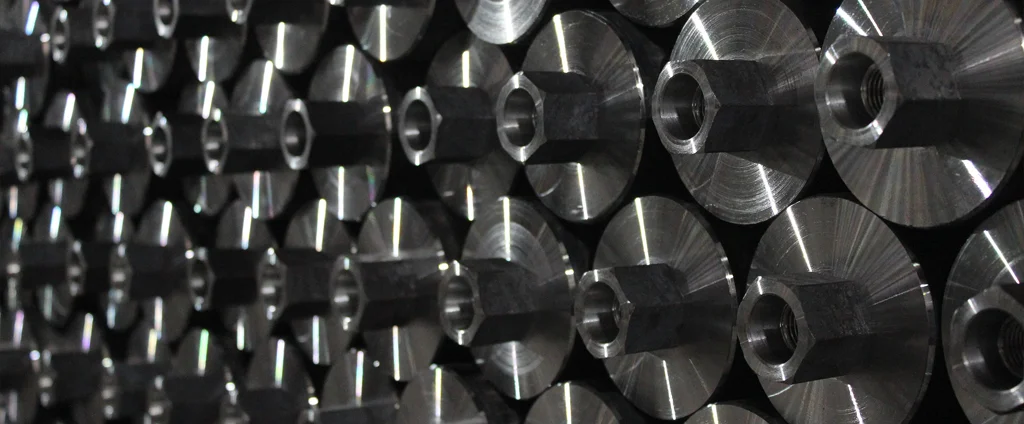SAE/AISI 4027 Alloy Steel (UNS G40270)

SAE/AISI 4027 is a low-carbon molybdenum alloy steel known for its balance of strength, toughness, and wear resistance. It is widely used in applications requiring moderate mechanical loads, reliable fatigue performance, and good machinability.
| Chemical Composition | ||
|---|---|---|
| Element | Min | Max |
| Iron | 98.08% | 98.70% |
| Carbon | 0.25% | 0.30% |
| Manganese | 0.70% | 0.90% |
| Molybdenum | 0.20% | 0.30% |
| Phosphorous | —— | 0.035% |
| Silicon | 0.15% | 0.35% |
| Sulfur | —— | 0.04% |
The following table provides a list of SAE/AISI 4027 properties in both SI and US customary/Imperial units.
Click on the button to switch between Metric and Imperial units.
| Physical Properties | Metric |
|---|---|
| Density | 7850 kg/m3 |
| Mechanical Properties | Metric |
| Tensile Strength (Ultimate) | 515 MPa |
| Tensile Strength (Yield) | 325 MPa |
| Young’s Modulus (E) | 190 - 210 GPa |
| Bulk Modulus (K) | 140 GPa |
| Shear Modulus (G) | 80 GPa |
| Elongation at Break | 30% |
| Reduction of Area | 53% |
| Poisson’s Ratio (ν) | 0.27 - 0.30 |
| Brinell Hardness | 143 |
| Thermal Properties | Metric |
| Thermal Conductivity | 44.5 W/m·K |
| Specific Heat Capacity (Cp) | 470 J/kg·K |
| Coefficient of Thermal Expansion (αL) | 1.2×10-5 1/°C |
| Electrical Properties | Metric |
| Electrical Conductivity | 4.12×106 S/m |
| Electrical Resistivity | 2.43×10-7 Ω·m |
The values in this table are approximate and can vary depending on various factors such as the specific manufacturing process and heat treatment applied to the alloy.
Advantages & Disadvantages of 4027 Alloy Steel
| Advantages | Disadvantages |
|---|---|
| Good strength and toughness | Moderate hardenability |
| Excellent wear resistance | Limited corrosion resistance |
| Suitable for applications requiring high tensile strength | Limited weldability |
| Good machinability | Susceptible to cracking during quenching |
| Cost-effective | Not suitable for high-temperature applications |
Applications of 4027 Alloy Steel
SAE/AISI 4027 is utilized across a wide range of demanding mechanical environments that benefit from its strength, wear resistance, and toughness, including:
- Gears and Gear Shafts: Due to its good strength, wear resistance, and fatigue resistance, it is often employed in the manufacturing of gears and gear shafts. It can withstand the high stresses and sliding contact associated with gear systems.
- Bolts and Fasteners: The combination of strength and toughness makes it suitable for use in bolts, studs, and fasteners. It provides reliable and secure connections in mechanical assemblies.
- Axles and Shafts: The high tensile strength and good fatigue resistance make it suitable for applications involving axles and shafts in machinery, vehicles, and equipment.
- Machine Components: Used in various machine components, including crankshafts, camshafts, spindles, and connecting rods. Its properties enable it to endure high loads, cyclic stresses, and wear.
- Tooling and Tool Holders: The wear resistance and strength make it ideal for tooling applications, such as punches, dies, and tool holders. It withstands the forces and abrasive wear associated with metalworking operations.
- Automotive Parts: Commonly found in automotive components requiring strength and wear resistance, such as transmission gears, axle shafts, and steering components.
- Construction Equipment: Utilized in construction machinery parts, such as excavator components, loader arms, and hydraulic cylinders, where high strength and durability are required.
